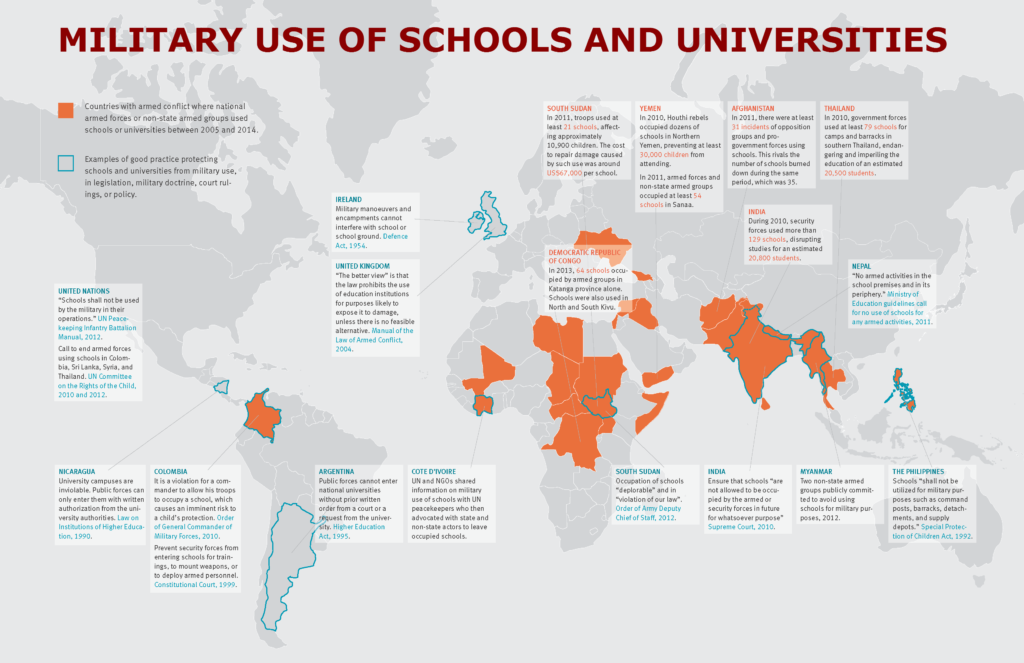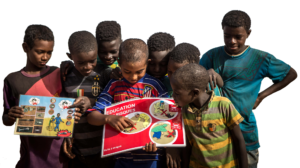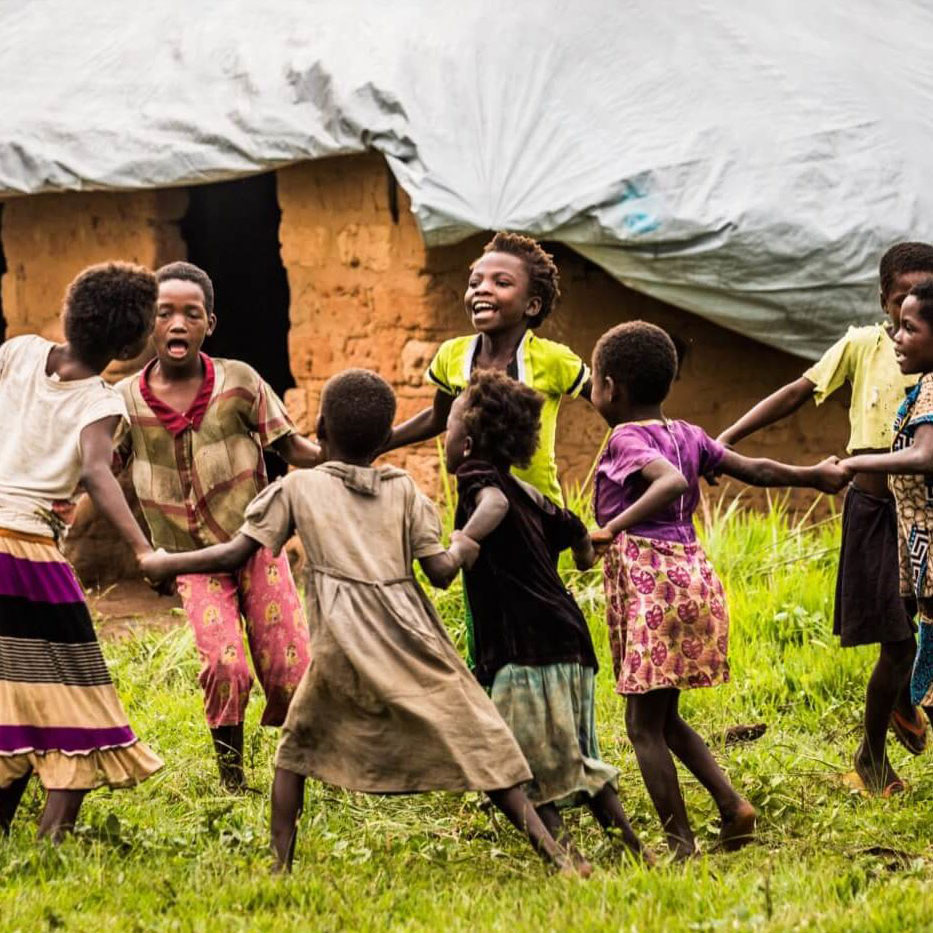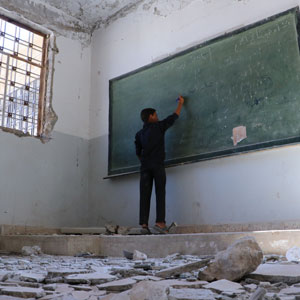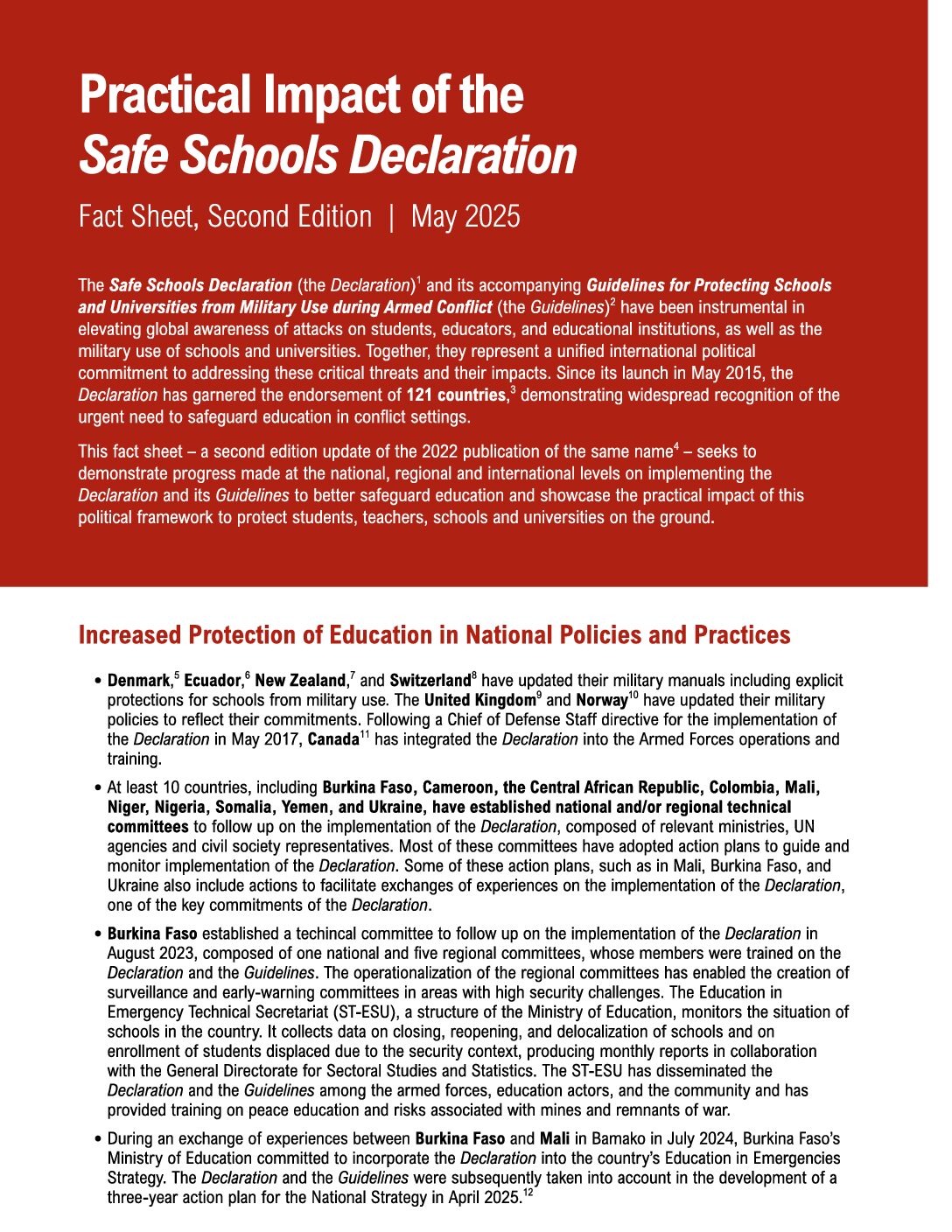GCPEA News
New International Guidelines Address an Insidious Gap in Protecting Education during War
Global Coalition to Protect Education from Attack, December 16, 2014
(Geneva) Government armed forces and non-state armed groups should refrain from using education facilities for military purposes in accordance with the new Guidelines for Protecting Schools and Universities from Military Use during Armed Conflict, unveiled today at the United Nations (UN) in Geneva, Switzerland, said the Global Coalition to Protect Education from Attack (GCPEA). The release of the Guidelines follows a March 2014 UN Security Council resolution encouraging all states to take action to deter the use of schools by armed forces and groups in contravention of applicable international law.
“The Guidelines provide a practical tool for preventing schools from becoming part of the front lines during war,” said Diya Nijhowne, the GCPEA Director. “By promoting responsible practice by commanders and their troops to preserve schools for learning, the Guidelines can help minimize the devastating impact of armed conflict on students.”
The finalization of the Guidelines represents the culmination of over two years of extensive consultations with governments, militaries, UN agencies, and civil society to develop guidance to keep armed parties out of schools and universities. They were released today at an event hosted by the Permanent Missions of Norway and Argentina. Also announced was an endorsement ceremony for the Guidelines, planned for mid-2015, and the intention to prepare a Declaration on Safe Schools to be adopted at the 2015 ceremony.
Attracted by their often central location, solid structure, and ready toilets, kitchens, and other facilities, fighting forces have used schools and universities for military purposes such as bases, firing positions, armories, and detention centers in conflicts in at least 25 countries over the past decade.
Under international humanitarian law, the military use of schools and universities can compromise their civilian status, transforming places of learning into lawful military targets, potentially placing students and staff on site directly in the line of fire from opposing forces. In addition to the risk of attack, the presence of fighters in schools for weeks or even years can have a debilitating effect on education: it disrupts teaching and learning activities, can leave children exposed to recruitment and violence, and can lead to increased absenteeism and dropout among students. Girls can be disproportionately affected, as families are particularly reluctant to send their daughters to study in classrooms used by armed men.
“Communities must often make an impossible choice between sharing their school with soldiers and endangering students and teachers, or stopping classes altogether and denying their children an education,” said Nijhowne. “When impeding education access and quality, and exposing students to violence and possible attack, the military use of schools and universities can violate human rights.”
In June 2014, the Norwegian government announced its commitment to champion the Guidelines and lead the endorsement process among states. Prior to today’s event, 29 states had already made public statements in support of the Guidelines. At the Geneva meeting, in addition to statements by concerned governments, civil society organizations that are GCPEA members, urged states to use the 2015 Norway ceremony to pledge publicly how they intend to incorporate protections for schools and universities from military use into their own domestic military doctrine, policies, and trainings.
Governments are not the only parties encouraged to adopt and implement the Guidelines. The Guidelines were also presented for discussion at a meeting of representatives from 35 non-state armed groups from 14 countries, organized in November, 2014 by Geneva Call, an organization that engages non-state armed groups to respect international humanitarian norms, including by adopting Deeds of Commitment. In a declaration by signatories to the Deeds, the non-state armed groups took into consideration the Guidelines and expressed their appreciation that the Guidelines recognized armed non-state actors as stakeholders.
“The release of the Guidelines and announcement of the endorsement ceremony in mid-2015 are significant milestones in the journey to improve the safety of schools, including in the midst of war,” said Nijhowne. “Over the next six months, states and non-state armed parties alike should prepare to endorse and implement the Guidelines to keep soldiers out of schools, and schools off the battlefield.”
Video
- Ending the Military Use of Schools: https://protectingeducation.org/emus-video
(Available in Arabic, Dutch, English, French, German, Japanese, Norwegian, and Spanish)
Additional Resources
- Questions and Answers on the Guidelines: https://protectingeducation.org/sites/default/files/documents/questions_and_answers.pdf
- About the use of schools for military purposes: https://protectingeducation.org/restricting-military-use-and-occupation
- Lessons in War: Military Use of Schools and Other Education Institutions during Conflict: https://protectingeducation.org/sites/default/files/documents/lessons_in_war.pdf
